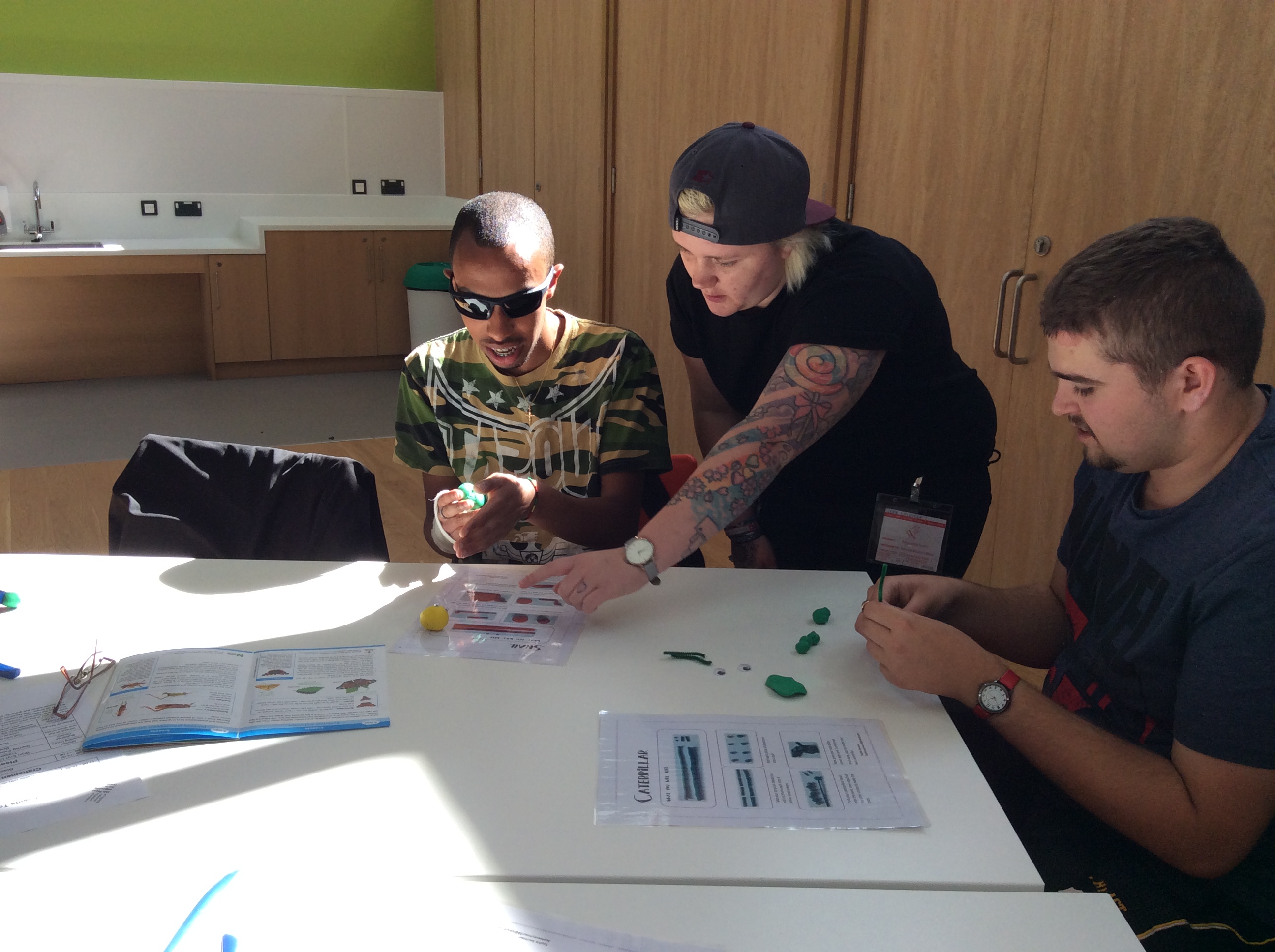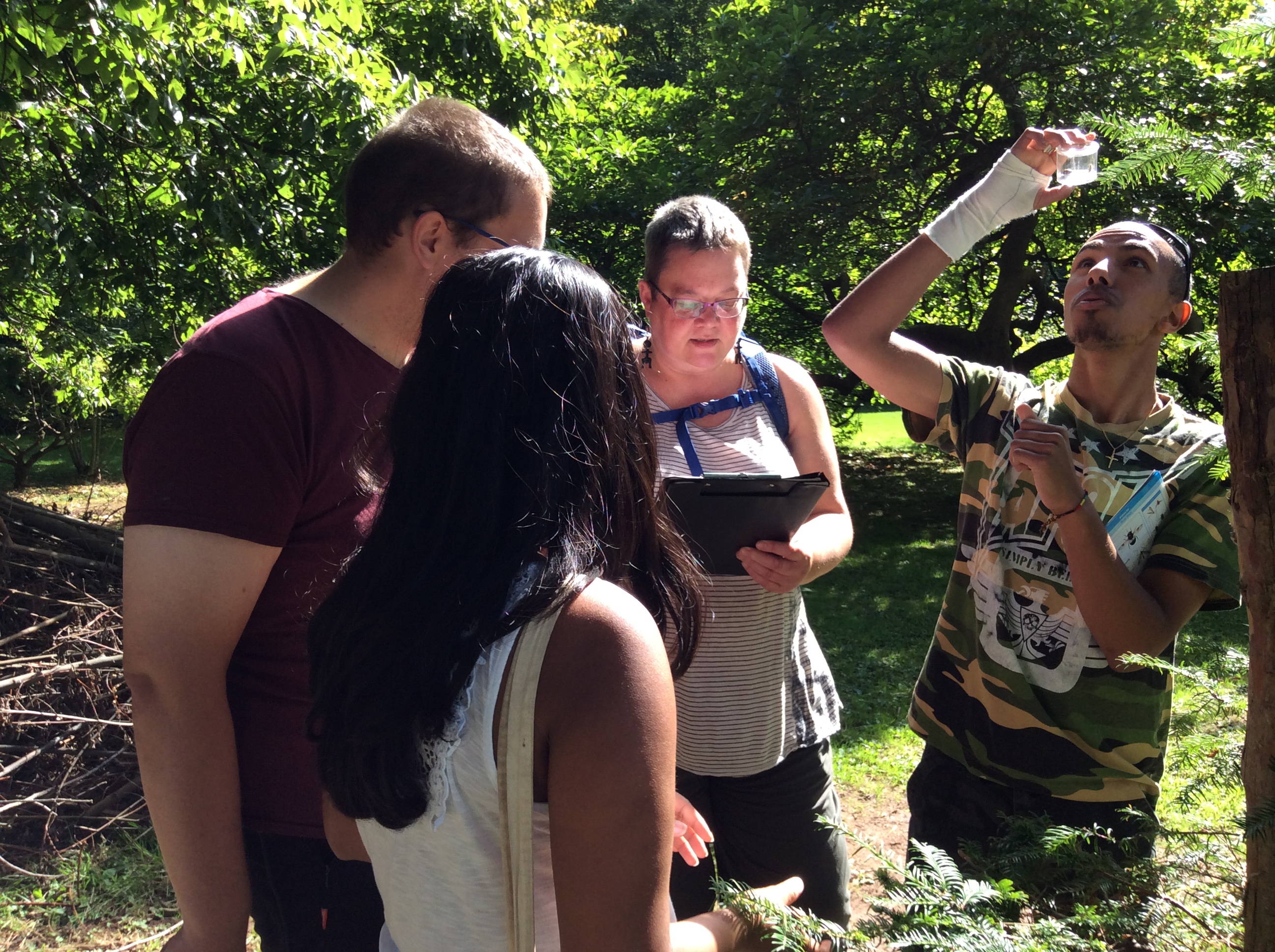Content can be downloaded for non-commercial purposes, such as for personal use or in educational resources.
For commercial purposes please contact the copyright holder directly.
Read more about the The Creative Archive Licence.
Description
As an OPAL community scientist, my role at Amgueddfa Cymru – National Museums Wales is to help our audiences engage with nature and science by running OPAL nature surveys with schools, community groups, universities and the general public. Alongside the surveys I also come up with fun educational activities to teach people about science.
Last month I teamed up with animator Sophie Seymour to run a bugs-themed day with a group of volunteers from Green Days, using the OPAL Bugs Count survey with an added twist: a stop-motion animation workshop. A lot of people are visual learners, and being one myself I wanted to come up with an activity that I would have understood and learnt from.
Green Days brings together adults who have learning difficulties or mental health problems to actively conserve nature through reserve management and maintenance. The project’s purpose is to give members the confidence and skills to live their lives independently, and the OPAL Bugs Count survey is a great way to get people out and about exploring their environment.
Bugs Count is OPAL’s most popular survey, and it’s not hard to see why. Within minutes, the group were engrossed in counting woodlice, beetle larvae, moths, grasshoppers, spiders, centipedes and millipedes in the Castle gardens at St. Fagans National Museum of History. We identified the bugs using the handy OPAL bug guide, which allows anyone to identify invertebrate groups by simply counting how many legs they have and analysing their anatomy. The data collected for OPAL helps scientists learn more about the distribution of invertebrate species and conserve them.
From real bugs to plasticine bugs
The animation workshop provided the perfect opportunity to teach participants the anatomical and physiological differences between invertebrate species. Sophie designed five different native bugs that we could animate – including some that we had found earlier in the day.
Everyone made their own bugs with plasticine, pipe cleaners and googly eyes. Sophie then showed us how to bring our bugs to life, by moving them and then taking a certain amount of pictures each time. Some of the participants worked together in groups and animated a race, a party and a football game, while others animated their own bug interacting with another. Sophie then used software to edit the animations to add sounds. We then ended the day with a few rounds of bug bingo, which was really fun and we learnt some really interesting facts about non-native insects, such as the tsetse fly, a bloodsucking fly that can transmit Trypanosomiasis.
The day was a success as all the participants wanted to the activities again, and throughout the day I was on the receiving end of non-stop relevant questions about different species. It went so smoothly, I didn’t have to encourage anyone to get involved, everyone was engrossed all day. After testing this day out and getting the timings correct, I’m considering trialling it with key stage 2 pupils alongside the minibeasts modules.
If you’re based in Cardiff and are interested in getting involved with OPAL, get in touch at [email protected].






Do you have information to add to this item? Please leave a comment
Comments (0)
You must be logged in to leave a comment